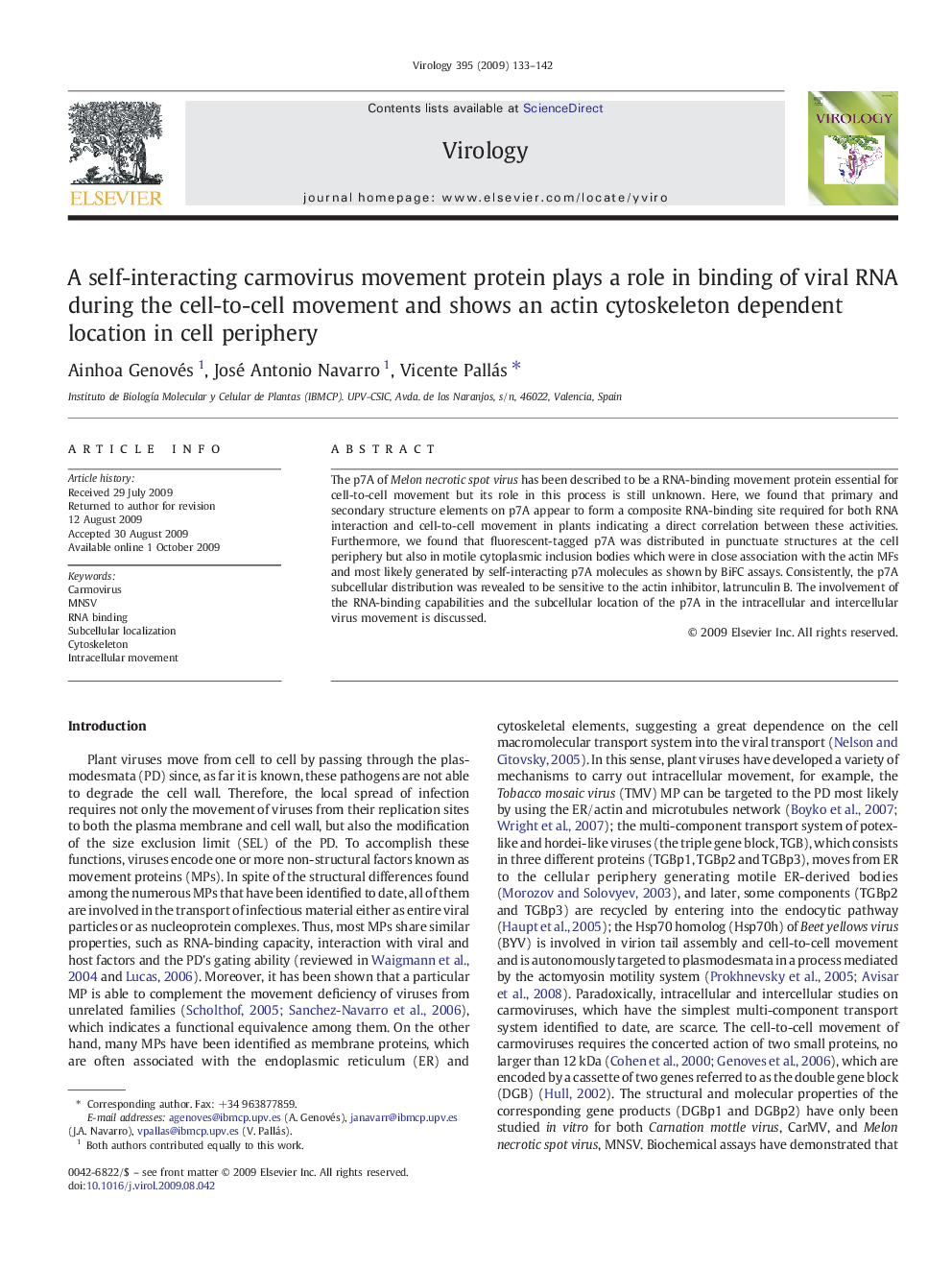| Article ID | Journal | Published Year | Pages | File Type |
|---|---|---|---|---|
| 3425348 | Virology | 2009 | 10 Pages |
The p7A of Melon necrotic spot virus has been described to be a RNA-binding movement protein essential for cell-to-cell movement but its role in this process is still unknown. Here, we found that primary and secondary structure elements on p7A appear to form a composite RNA-binding site required for both RNA interaction and cell-to-cell movement in plants indicating a direct correlation between these activities. Furthermore, we found that fluorescent-tagged p7A was distributed in punctuate structures at the cell periphery but also in motile cytoplasmic inclusion bodies which were in close association with the actin MFs and most likely generated by self-interacting p7A molecules as shown by BiFC assays. Consistently, the p7A subcellular distribution was revealed to be sensitive to the actin inhibitor, latrunculin B. The involvement of the RNA-binding capabilities and the subcellular location of the p7A in the intracellular and intercellular virus movement is discussed.
